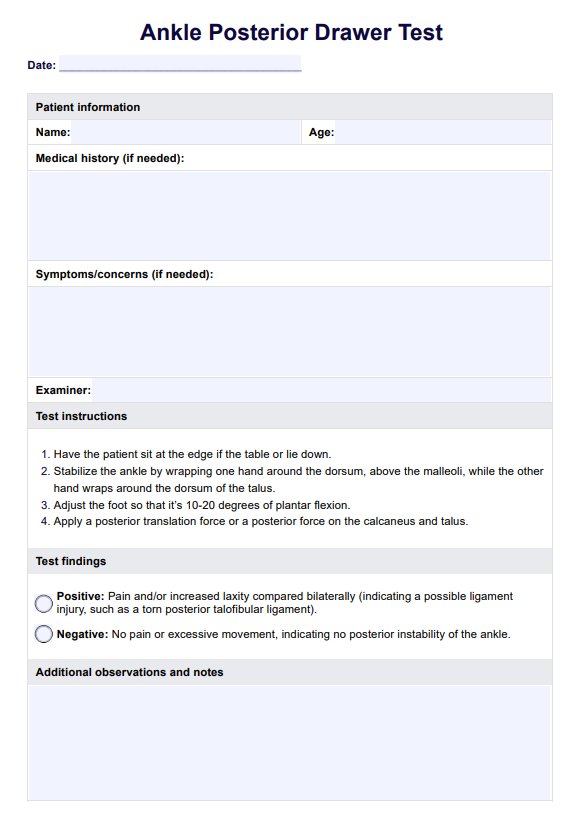The posterior drawer test is a physical examination that assesses the integrity of the posterior talofibular ligament (PTFL) in the ankle, often used to diagnose ligamentous laxity or rupture.

Ankle Posterior Drawer Test
Assess and diagnose posterior talofibular ligament injuries with Carepatron's Ankle Posterior Drawer Test template, enhancing precision in clinical settings!
Use Template
Ankle Posterior Drawer Test Template
Commonly asked questions
To perform a posterior drawer test, position the patient supine, stabilize the tibia and fibula, and apply a posterior force on the calcaneus while plantar flexing the foot.
A positive test of the posterior drawer is when there is an excessive posterior translation or a sulcus sign, suggesting ligamentous laxity or rupture in the posterior talofibular ligament.
EHR and practice management software
Get started for free
*No credit card required
Free
$0/usd
Unlimited clients
Telehealth
1GB of storage
Client portal text
Automated billing and online payments











